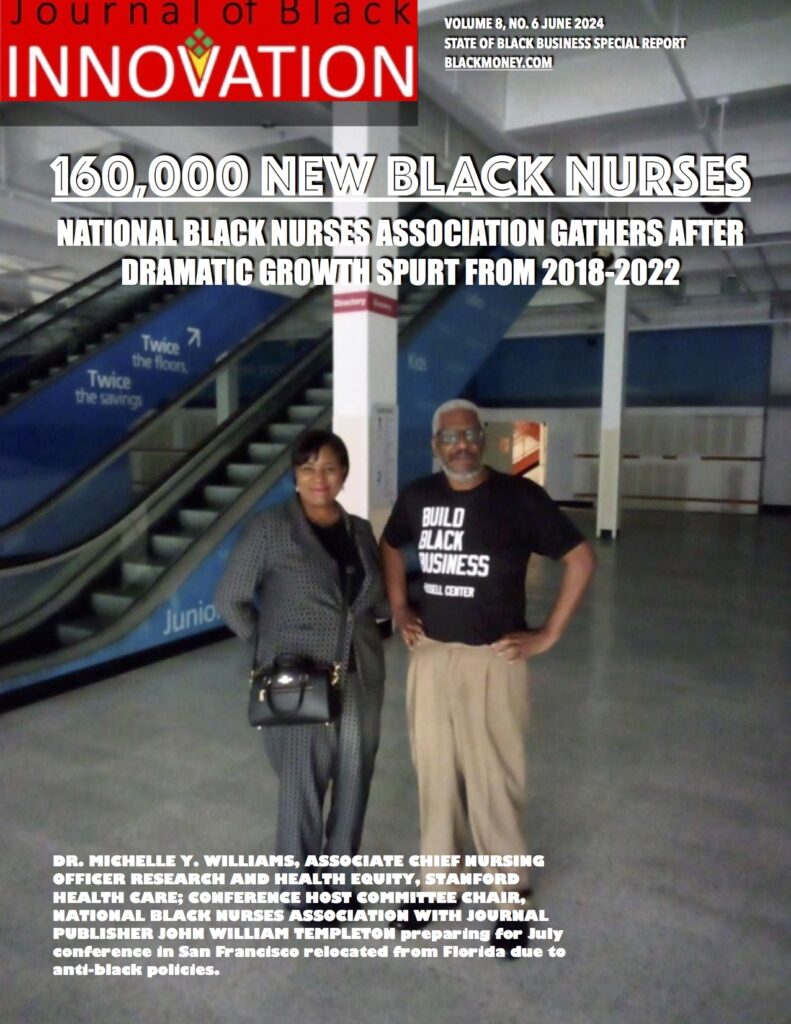
WASHINGTON – In a stunning success story for diversity, equity and inclusion, the number of African-American nurses grew from 310,000 in 2018 to 473,408 by 2022, notes the June issue of the Journal of Black Innovation.
The data is part of VOTEBLACKBUSINESS: State of Black Business, 21st edition and relies on analyses by the Health Resources Data Administration in the U.S. Dept. of Health and Human Services.
Dr. Sheldon Fields, President of the National Black Nurses Association, which meets in San Francisco in late July, told Innovation&Equity23 in January that the largest Black professional organization is bringing together 112 chapters in 32 states as “unified Black nurses making a difference in creating healthy people and communities worldwide.”
Its seven legislative priorities include: inequities in Black maternal health; eliminating health inequities: diversifying the nursing workforce; the implications of Black infant mortality; dismantling structural racism in nursing; the catastrophic impact of climate change; gun violence and obesity.
He cited the new Stanford Medicine Black Nurses Association as a model for the direction that the organization is headed by growing a chapter within an academic health system with support from top management.
Dr. Michelle Y. Williams, associate chief nursing officer at Stanford Health Care, helped facilitate the NBNA move from Florida to San Francisco in response to a variety of anti-black measures.
The fastest growth in Black nurses occurred in New York State, which gained almost 30,000 Black nurses in four years. LaShawn Allen-Muhammad, executive director of Central Brooklyn Economic Development Corp., has led an effort to bring public housing residents into nursing, noting that it has changed the trajectory for whole families. She is now aligned with OneBrooklyn Health to build more health careers for the Brownsville neighborhood.
